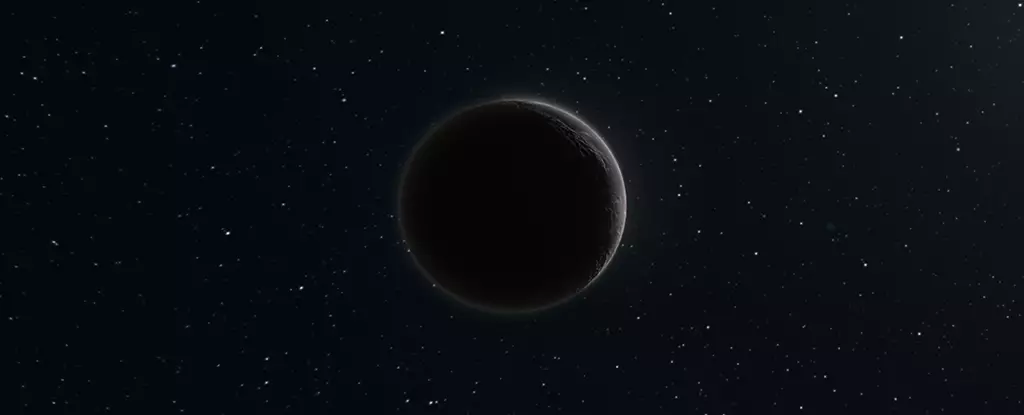Despite the technological marvels of contemporary telescopes, the farthest reaches of our Solar System remain shrouded in enigma. The immense distance, sparse sunlight, and faint signals all merge into a complex puzzle that challenges astronomers’ perceptions. In what should be a well-charted celestial neighborhood, new discoveries funnel into the narrative that the past and present of our Solar System are far more intricate than previously imagined. These remote objects, often relics from the system’s infancy, provide crucial clues about its formation and subsequent evolution, yet their subtle signatures demand immense patience and precision to detect.
Much of what astronomers currently know hinges on indirect evidence. These celestial wanderers seldom announce their presence with grand displays; instead, they whisper their secrets through faint glimmers, tiny gravitational nudges, or the rare, fleeting flash of a streak across the night sky. The challenge isn’t just in spotting them but in deciphering what their orbits and physical properties reveal about the deeper history of our planetary neighborhood. The mysteries of these distant objects hint at unseen forces and uncharted structures that have shaped—and still shape—our Solar System.
The Enigmatic Sednoids and the Search for Planet Nine
One of the most tantalizing lines of evidence in recent years involves Sednoids—a rare subclass of Trans-Neptunian Objects distinguished by their extreme orbits. Named after the dwarf planet Sedna, these objects possess elongated trajectories with large perihelia, suggesting influences beyond what Neptune’s gravity can explain. For decades, Sednoids have puzzled astronomers because their orbital mechanics imply the existence of an unseen massive influence lurking in the darkness.
The recent detection of a new Sednoid, dubbed 2023 KQ14 but nicknamed “Ammonite,” signals an exciting step forward. Discovered through extensive observations with advanced telescopes like Subaru and supported by follow-up studies, these objects paint a picture of a dynamic and complex outer Solar System. Ammonite’s orbit, which has been tracked meticulously over 19 years, reveals a stability that hints at ancient origins, dating back almost to the dawn of the Solar System itself.
What makes Ammonite particularly interesting is its position—filling a previously unexplained gap in perihelion distances—challenging existing models and prompting a reevaluation of the forces that sculpted these distant orbits. Its detection and orbital analysis have invigorated debates about the candidate influences—most notably, the hypothesized Planet Nine. While initial assumptions linked Sednoids’ peculiar orbits to this elusive planet, new findings underscore the diversity of orbital configurations, suggesting that multiple mechanisms—perhaps ancient interactions, ejected planetary remnants, or external stellar influences—may be at play.
Implications for the Existence of a Hidden Planet
The concept of Planet Nine occupies a central stage in modern planetary science debates. Proponents argue that a massive, yet unseen, planet beyond Neptune could shepherd the orbits of distant objects, creating a gravitational architecture that maintains their elongated, stable paths. Yet, this hypothesis is far from universally accepted. Every new Sednoid discovered serves both as evidence and as a constraint—refining the potential parameters of where and how such a planet might exist.
The discovery of Ammonite complicates this narrative further. Its orbital path diverges from the patterns seen in other Sednoids, thereby weakening the argument that a single unseen planet is solely responsible for their orbital configurations. Instead, it hints at a more chaotic or multi-faceted history, perhaps involving ancient planetary ejection, gravitational interactions with passing stars, or as-yet-unknown phenomena in the early Solar System.
As our detection capabilities sharpen and new telescopes come online, the hunt for Planet Nine is destined to intensify. The upcoming Vera Rubin Observatory, with its vast survey capability, promises to revolutionize our ability to detect these faint and distant objects, potentially uncovering the planet itself or further complicating the orbital dynamics puzzle. If Planet Nine does reside out there, it must be unimaginably distant and dim, possibly rivaling the size of Neptune but hiding below our current detection thresholds. The discovery or absence of this planet could redefine our view of the Solar System’s architecture.
Broader Perspectives: Challenging Established Models
What makes these recent findings significant isn’t just the addition of a new object or the refinement of existing models; it’s the profound implications for our understanding of planetary system formation. The stability of objects like Ammonite over billions of years indicates that the outer Solar System experienced a turbulent early history—one that possibly involved interactions with objects or influences we have yet to fully comprehend.
The notion that our Solar System’s architecture is more chaotic than orderly clashes with traditional models driven solely by planetary migrations and gradual celestial sculpting. Instead, it suggests external influences, perhaps from passing stars, rogue planets, or ancient stellar encounters, have played a role in shaping the distant orbits we observe today. Such scenarios underscore the importance of viewing our Solar System as a dynamic relic—one with a violent and convoluted history that may include episodes of ejected planets, captured interstellar objects, and gravitational interactions from a crowded stellar nursery environment.
The discovery of objects like Ammonite shines a spotlight on the limits of our current understanding and the necessity of pushing technological frontiers. The subtle clues left in the orbits of these distant objects serve as archaeological remains, revealing the echoes of cosmic events long gone. They compel us to look beyond simple models and accept that the architecture of our planetary neighborhood is perhaps more reflective of a turbulent cosmic past than a serene, neatly ordered system.
In essence, these distant, faint objects challenge us to reconsider what constitutes the “normal” in planetary science. Their existence and puzzling orbits hint at a richer narrative—one where unseen influences and distant epochs are integral to the full story of how the Solar System came to be. Far from being mere celestial curiosities, Sednoids and similar bodies are vital keys to unlocking the deeper history of our cosmic backyard, pushing the boundaries of discovery and understanding in ways we are only beginning to fathom.

